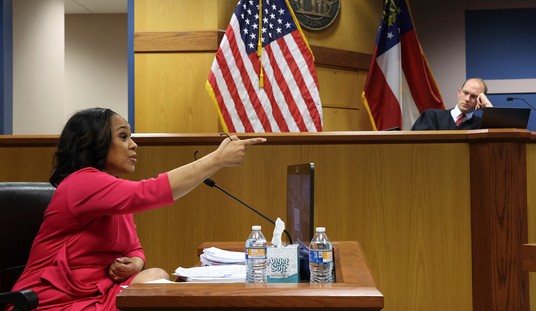This past Saturday, March 28, was the thirtieth anniversary of the infamous 1979 incident at the Three Mile Island nuclear plant in eastern Pennsylvania. The name has become notorious because the incident was a major blow to the nuclear industry, though the actual event was nowhere near as dire as was reported at the time and much less dire than current popular perception. Ask people today how many died at Three Mile Island and, if they even know what you’re talking about, many can’t give you a number. But as one popular bumper sticker accurately has it, “More People Died In Ted Kennedy’s Car Than At Three Mile Island.” No one was even injured, and the Kemeny Commission determined that there would be not even a risk of cancer in any population as a result (and as far as we know, there never was).
Unfortunately, the public perception was magnified and distorted by The China Syndrome, a pseudoscientific movie thriller that had hit the screens less than two weeks earlier. The movie (inaccurately) depicted a worst-case nuclear plant disaster, in which the fissioning atomic core loses its ability to be cooled and cannot be shut down. This results in a meltdown, the hot radioactive fuel flowing through the bottom of the containment vessel in which it resides, searing its way down through the crust and mantle of the planet, piercing the fiery molten core, releasing magma and toxic gases, and creating an artificial volcano with thousands running away, their hair ablaze, screaming and gagging in terror. Contrary to its name, though, it doesn’t actually make it all the way through to the other side, for gravitational if no other reasons.
The combination of sometimes hysterical and confused news reporting and vivid memories of the Jane-Fonda/Hollywood polemic substantially increased public fear — and rejection — of the nuclear industry, resulting in a dramatic slowing of new plant orders and a hiatus in new construction. And of course back then, the fear was not “climate change” — the new euphemism for “global warming,” contrived to get around the repeated embarrassment of speeches by former Vice-President Gore on the subject being delivered in venues of blizzards and record frigid temperatures. Or if it was, the worry about climate change was not warming; it was global cooling and a return of the glaciers.
So because of a new irrational fear of radiation and nuclear technology, driven by misreporting and popular culture, nukes were out and coal (which actually puts more radiation into the atmosphere than nuclear plants, due to burning radioactive materials that go up in the fly ash) was in. Another popular bumper sticker of the time — and of the counterculture — was “Split Wood, Not Atoms.” The Chernobyl disaster, seven years later, which truly was a disaster — killing two workers immediately and many others later of radiation poisoning, contaminating vast swathes of land in the Ukraine and Georgia, and irradiating the air over Europe — hammered more nails in the coffin. The Chernobyl disaster, as so many environmental disasters inside the Iron Curtain, was caused by an endemic indifference to human life by the Moscow regime and a lack of accountability to the people by its government (factors that only three years later finally resulted in its failure and collapse). The Soviets didn’t even have containment vessels for their reactors.
But that was then, this is now. More people have come to realize that Three Mile Island was not Chernobyl (or the melting-down plant in the movie), and that three decades later plants can be designed to be even safer than those safe plants of the seventies. And now the fear, rational or otherwise, is not Chicago under a mile of ice, but New York under water, beachfront property in Orlando, and the end of California winemaking. Last year, 19 permits for new plants were applied for by the industry to meet the growing demand for alternate energy. So carbon is out and atoms are back in.
Or are they? Well, it’s clear that the Democrats in the White House and Congress have declared war on carbon, which may result in a war on trade (just what we need in a global recession). But their preferred solutions seem to be alternatives other than nuclear — wind, solar, geothermal — despite the fact that such technologies cannot be deployed fast enough or economically enough to address realistic future energy demands.
Both during the campaign and since inauguration, the Obama team has paid lip service to nuclear power, declaring it a “central part of the energy mix.” But actions speak louder than words. Critics note that the administration, amidst the hundreds of billions included in the recent “stimulus” bill, fought against the inclusion of needed billions for insurance of the industry and that it resists including nuclear under the umbrella of “renewable” energy (a debatable proposition, considering the possibility of breeder reactors). Most importantly, it has shut the door on the Yucca Mountain waste repository in Nevada, re-elevating the issue of what is to be done with the byproducts of nuclear power. This remains one of the most powerful, albeit emotional, objections against it (I still favor lunar storage, myself).
The administration has its defenders as well:
Yucca Mountain, they note, had been so controversial that it was unlikely ever to get built. A comprehensive energy bill could include the industry’s coveted loans. And a renewable standard, they say, is supposed to be for renewables; nuclear can get help elsewhere.
Administration defenders are correct that increasing the costs of putting carbon in the atmosphere will inevitably favor the nuclear industry. Assuming this is true, one would hope that it won’t be hindered and overburdened by other costs of over-regulation. One would also hope that the nuclear industry is allowed the freedom to innovate beyond the often-stifling strictures of central planners at the Nuclear Regulatory Commission to find intrinsically safer and more cost-effective plant designs. (TMI and other reactors from the seventies were basically scaled-up early submarine power plants.)
Either way, and thankfully, thirty years later, the Three Mile Island “disaster” is far enough in the past that it is no longer — given that it never really should have been — part of the debate.









Join the conversation as a VIP Member